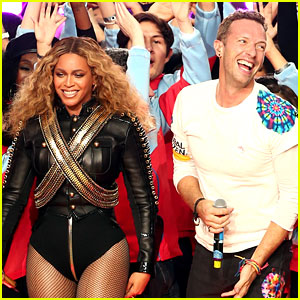
Neymar Jnr: Aged 24, Neymar has more club goals than what Messi and Cristiano had for club and country
Brazilian national team captain and Barcelona forward Neymar turned 24 on Friday.
Two of the greatest football players in the world today, Cristiano Ronaldo and Neymar Júnior, celebrate their birthdays on February 5. The Real Madrid superstar turned 31, while the Brazilian is 7 years younger.
The former player of Sporting and Manchester United is already considered to be one of the greatest players of all time, and his numbers speak for itself; 518 goals in 774 career games, and 343 goals in 328 matches for Real Madrid only. Meanwhile, Neymar reached the FIFA Ballon d'Or podium for the first time in his career for his performances in 2015. He finished behind Cristiano Ronaldo and club-mate Lionel Messi, who won the award for a record fifth time.Neither Cristiano Ronaldo nor Lionel Messi has more goals than the current poster boy of Brazil when we consider the figures at the age of 24. Cristiano Ronaldo was in his final months at United with that age in 2009, and had scored 132 goals [111 for clubs and 21 for Portugal]. On the other hand, Messi had 197 career goals [180 for Barça and 17 for Argentina] when he was 24. Today, the Argentine maestro has 485 goals in 614 matches. However, aged 24, Neymar has more club goals [209] than what Messi and Cristiano had for club and country at that age. In addition, he has scored 46 goals for the five-time World champions, which takes his tally to 255 as a professional footballer.
source:sambafoot.com
RE: 101 die in Nigeria from Lassa fever outbreak
Lagos (AFP) - A growing Lassa fever outbreak in Nigeria has killed 101 people, as West Africa battles to contain a flare up of the virus, according to data from the nation's health authorities released Saturday.
Nigeria Centre for Disease Control (NCDC) statistics show that reported cases of the haemorrhagic disease -- both confirmed and suspected -- stood at 175 with a total of 101 deaths since August.
"As at today, 19 (including Abuja) states are currently following up contacts, or have suspected cases with laboratory results pending or laboratory confirmed cases," the NCDC said in a statement.
Deaths from the virus were recorded in the nation's political capital, Abuja, Lagos, and 14 other states, the NCDC said.
While health authorities assure Africa's most populous country of more than 170 million they have the virus under control, there are fears the actual scale of the outbreak is under-reported.
The outbreak of Lassa fever was only announced in January -- months after the first case of the disease happened in August -- with subsequent deaths reported in 10 states, including Abuja.
Last year, 12 people died in Nigeria out of 375 infected, while in 2012 there were 1,723 cases and 112 deaths, according to the NCDC.
In neighbouring Benin at least nine people have died in a Lassa outbreak, with a total of 20 suspected cases, health authorities said Tuesday.
Benin was last hit by a Lassa fever outbreak in October 2014, when nine people suspected of having the virus died.
The number of Lassa fever infections in West Africa every year is between 100,000 to 300,000, with about 5,000 deaths, according to the US Centers for Disease Control and Prevention.
Lassa fever belongs to the same family as Marburg and Ebola, two deadly viruses that lead to infections with fever, vomiting and, in worse case scenarios, haemorrhagic bleeding.
Its name is from the town of Lassa in northern Nigeria where it was first identified in 1969.
Endemic to the region, Lassa fever is asymptomatic in 80 percent of cases but for others it can cause internal bleeding, especially when diagnosed late.
The virus is spread through contact with food or household items contaminated with rats' urine or faeces or after coming in direct contact with the bodily fluids of an infected person.
SOURCE: news.yahoo.com
KEEPING FIT:Why Diet Matters More than Exercise For Weight Loss, In One Video
If you want to lose weight, diet and exercise are both important. However, that doesn’t mean they’re equally important. This video explains why changing your diet has a bigger effect on your weight loss than exercise. See video after the cut
As we’ve discussed at length before, most of the calories you burn in a given day are spent just keeping you alive. While you can burn calories through exercise, you don’t burn that much. The video above explains that running for 20 minutes only burns around 200 calories or so. Whereas an average 20 oz. bottle of Coke contains 260 calories. If you could choose to get rid of 200 calories by working out for a half hour, or drinking water with dinner, which do you think would be easier?
The video goes on to explain that exercise is by no means bad. There are plenty of other health benefits to exercise that have nothing to do with weight loss. However, if your goal is to lose weight, quantifying how much you’re eating in a given day will be a better first step than hitting the gym after that burger.
source:lifehacker.com
OBAMA ADMINISTRATION UNDER SCRUTINY: Republicans Debate Whether Obama Incompetent or Nefarious
Florida Sen. Marco Rubio attempted to reframe Republican thinking about President Obama at Saturday’s debate in a way that could help him.
Through most of the Obama Administration, conservative critics have charged that the Obama is in over his head, to some success. When the Pew Research Center asked for one word to describe the President in 2015, the top two picks were “good” and “incompetent.”
But that framing could hurt Rubio, another first-term Senator known for his eloquence who is running for the White House, so he put forward an alternative Saturday. SEE VIDEO HERE
He then cited the Affordable Care Act health insurance changes, the Dodd-Frank Wall Street reform legislation and the 2009 stimulus as examples.
He later elaborated on the point: “We are not facing a president that doesn’t know what he’s doing. He knows what he is doing. That’s why he’s done the things he’s done.”
But the other Republicans on stage—particularly those who aren’t also first-term Senators—didn’t buy that vision of President Obama.
Former Florida Gov. Jeb Bush took exception to Rubio’s argument, painting the Florida Senator with the same brush.
“Look, let’s be clear,” he said. “Marco Rubio is a gifted, gifted politician, and he may have the skills to be a President of the United States, but we’ve tried it the old way with Barack Obama, with soaring eloquence and we got—we didn’t get a leader we got someone who wants to divide the country up.”
Real estate mogul Donald Trump also disagreed with Rubio.
“I think we have a president who, as a president, is totally incompetent, and he doesn’t know what he’s doing,” Trump said. “I think he has no idea what he’s doing. And our country is going to hell. So, I just want to say, we disagree on that. Is that okay?”
Taiwan Earthquake: 34 Dead, More Than 100 Still Trapped After Earthquake Hits Taiwan
More than 100 people were still missing Sunday after an earthquake struck southern Taiwan, causing the collapse of a high-rise apartment building that left at least 34 dead, authorities said.
Rescuers managed to pull more than 170 survivors from the wreckage in Tainan, the worst-hit city, following the 6.4-magnitude earthquake that hit at dawn Saturday, but there are still about 124 people trapped in the rubble, the Associated Press reports.
The building collapse caused 24 of the 26 confirmed deaths so far, including that of a 6-month-old baby girl, according to CBS News. Rescuers had also found the bodies of a 10-day-old infant at the site on Saturday, the AP reports.
source:time.com
RE: "The First Terrorist Attack in the U.S." - The Letelier-Moffitt Assassinations
RE: Note: Our accounts contain the personal recollections and opinions of the individual interviewed. The views expressed should not be considered official statements of the U.S. government or the Association for Diplomatic Studies and Training. READ FULL AFTER THE CUT
ADST conducts oral history interviews with retired U.S. diplomats, and uses their accounts to form narratives around specific events or concepts, in order to further the study of American diplomatic history and provide the historical perspective of those directly involved.
ADST conducts oral history interviews with retired U.S. diplomats, and uses their accounts to form narratives around specific events or concepts, in order to further the study of American diplomatic history and provide the historical perspective of those directly involved.
After Augusto Pinochet led a coup d'état in Chile on September 11, 1973, taking power from the democratically elected President Salvador Allende, he exiled Allende's Foreign Minister, Orlando Letelier. After Letelier sought asylum in the United States, Pinochet believed he was acting as an informant to the U.S. government. Consequently, he was targeted by the Pinochet regime and assassinated by a car bomb, along with his American assistant, Ronni Moffitt, in Sheridan Circle in Washington, D.C. on September 21, 1976.
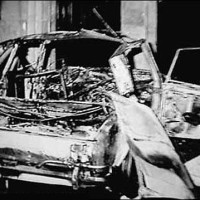
At the time, the U.S. government blatantly denied having any intelligence that could have prevented the assassination. Recently released documents reveal incriminating evidence that contradicts this. A cable declassified in April 2010 reveals that a démarche protesting Pinochet's Operation Condor assassination program was proposed and sent on August 23, 1976 to U.S. embassies in Uruguay, Argentina, and Chile to be delivered to their host governments; however, this was later rescinded on September, 16, 1976 by Kissinger, following concerns raised by the U.S. ambassadors assigned there of both personal safety and a likely diplomatic blowback. The assassination took place five days later.

At the time, the U.S. government blatantly denied having any intelligence that could have prevented the assassination. Recently released documents reveal incriminating evidence that contradicts this. A cable declassified in April 2010 reveals that a démarche protesting Pinochet's Operation Condor assassination program was proposed and sent on August 23, 1976 to U.S. embassies in Uruguay, Argentina, and Chile to be delivered to their host governments; however, this was later rescinded on September, 16, 1976 by Kissinger, following concerns raised by the U.S. ambassadors assigned there of both personal safety and a likely diplomatic blowback. The assassination took place five days later.
This account was compiled from an interview by ADST in 1991 with George W. Landau, Ambassador to Paraguay from 1972-77 and Ambassador to Chile from 1977-82. You can read the entire account on ADST.org.
LANDAU: It happened in the summer of 1976. The Paraguayans put a man in jail as a communist. Unfortunately the fellow was also reportedly connected with the Agency [CIA] he was also reportedly connected with the Inter-American Foundation [an independent agency of the United States government that funds development projects undertaken by grassroots groups and nongovernmental organizations in Latin America and the Caribbean]. I really hit a brick wall trying to get him out -- I talked to President Stroessner who said, "He is a real dangerous communist and if, in fact he is connected with the Agency, it shows how little sense the Agency had in taking him on."
Q: The man was a Paraguayan?
LANDAU: Yes, a Paraguayan. Of course the Agency never confirmed or denied that he was connected to it. I pointed out that he was connected to the Inter-American Foundation which did not impress Stroessner one way or another. It festered in the U.S. Government and finally the Deputy Director of the Agency, my old friend [Vernon] Dick Walters, came down. Dick Walters with his usual great diplomatic skills was able to convince President Stroessner to let the fellow go, which happened. The man who was particularly influential in getting all of this done, particularly in getting Dick Walters in and out of Paraguay without anybody knowing it, was the personal secretary of President Stroessner, Conrado Pappalardo.
About a month after all of this happened, Pappalardo came to see me and said that President Stroessner had received a phone call from President Pinochet telling him that there were serious irregularities in the Codelco Corporation in New York, which is the Chilean copper state agency that handles millions and millions of dollars every month in copper sales to the United States and elsewhere.
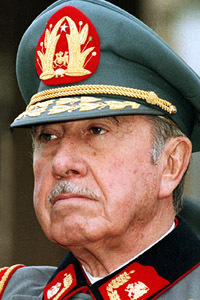
Pinochet wanted to send two officials to look into these irregularities, but of course it had to be done clandestinely. They were in Paraguay and Pappalardo wanted me to give them a visa.
I said, "Thank you for telling me, but I cannot give them visas because you have just told me that you want a visa for Chileans, and you also told me, if I did not misunderstand, that you were giving them Paraguayan passports, or are they coming on Chilean passports? If they are coming on Chilean passports I have no problem, but if they are coming on Paraguayan passports I cannot give them a visa."

Pinochet wanted to send two officials to look into these irregularities, but of course it had to be done clandestinely. They were in Paraguay and Pappalardo wanted me to give them a visa.
I said, "Thank you for telling me, but I cannot give them visas because you have just told me that you want a visa for Chileans, and you also told me, if I did not misunderstand, that you were giving them Paraguayan passports, or are they coming on Chilean passports? If they are coming on Chilean passports I have no problem, but if they are coming on Paraguayan passports I cannot give them a visa."
He said, "No, they are coming on Paraguayan passports to really make it deep cover."
I said, "No, that is just not possible."
He came the next day and said, "I am just telling you as a friend, if you don't give me the visas now, I can send passports over to the consulate any day with a diplomatic note and the Consul will give them to them under normal diplomatic regulations and the Consul will never know who they are. I am just tipping you off that these fellows are coming and if you have any problems with them you can watch them over there."
I had to make a decision on this and I decided to give them visas, which was obviously in violation of regulations. Of course, I don't give visas, the Consul does and I did not want to get him in trouble so I gave him written instructions to give visas to those people, but he did not know the details. But as a precaution, since I did not trust the Paraguayans or anyone else, I made photostats of the applications and photostats of the pictures and sent them to Washington. In fact all this took several days to go back and forth.
The two Chileans were sufficiently alarmed and figured that something was up and took their passports and returned to Chile, they never used the visas.
Q: You had said you had informed the Department...
LANDAU: ...And the Agency because one of the points that Pappalardo had said was that he had instructed those two fellows to see Pappalardo's friend General Walters. I sent this message and I got a message back from the head of CIA who had just taken over, George Bush.
He had absolutely no interest in this and did not want to be involved. I then sent a note to the Paraguayan government saying that the visas were of no value because the Department had informed me that on entry into port they would be arrested anyway and I would like to have the passports returned. They were returned about six weeks later without the photos -- the photos were ripped out. But I had them and had sent them in....
Well, as it happened, we learned later on, the two fellows went back to Chile, smelled a rat and never used the Paraguayan passports, but they were concerned about what they had done.
So they sent two officers, who had absolutely nothing to do with the case, under the same names they had given me, on Chilean passports, to go to the United States and stay two weeks and to come back. They had no purpose, other than, if anybody checked on this they will find the names there. However, what the Chileans did not know was that we had the photos.
So they sent two officers, who had absolutely nothing to do with the case, under the same names they had given me, on Chilean passports, to go to the United States and stay two weeks and to come back. They had no purpose, other than, if anybody checked on this they will find the names there. However, what the Chileans did not know was that we had the photos.
We knew the people who went under those names were not the people who were in Paraguay. The people who were in Paraguay went under different Chilean passports to the United States, they were [Michael] Townley, an American, and Fernandez Larios, a Chilean army officer (at left), and they then engineered the killing of Orlando Letelier. When I say engineered it, they did not actually kill him physically, but Townley contracted the Cubans.
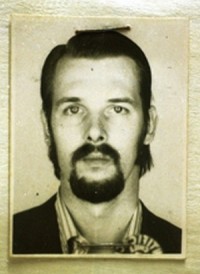
Of course I had no idea when we heard that Letelier was killed that it had anything to do with those fellows. The names were different; there was absolutely no reference.

Of course I had no idea when we heard that Letelier was killed that it had anything to do with those fellows. The names were different; there was absolutely no reference.
The FBI and the Department of Justice started to put two and two together by matching the photos of the Paraguayan passports which I sent in with Chilean passports who had the same pictures, but totally different names because Townley and Fernandez Larios went under different names than originally given. So eventually that helped to identify them, and eventually the Department of Justice in 1978 and 1979 sent the extradition requests for Townley and Fernandez Larios to me.
The really key point was that we wanted the American, Townley, who we thought was the main perpetrator. Not the brain, because the brain was obviously the Chief of the Chilean secret police (DINA), General Contreras. So I asked for Townley as an American. I talked to the Foreign Minister and he said, "Well, we don't know where he is." I said, "Look at today's papers, it says he is here and there."
He said, "That is all nonsense, he is not here." I pressed very hard. In fact after a number of discussions with the Foreign Minister ... they just handed Townley (at right) over to us. He was an American, he was not extradited, they just drove him from the hotel to the airport. They called me up in the morning and said they were going to give me Townley; he was in prison.
I called the FBI agents who were there. They went to the airport, they picked up Townley and off they went to the United States. Townley, of course, broke the whole story. He still lives in the United States under the federal witness immunity program and lives happily ever after. [He was convicted of murder and served 62 months in prison.]
We have tracked down the people who were the physical assassins of Letelier, the Cubans, Townley and the others. The intellectual perpetrators, General Contreras and Colonel Espinosa were put in jail when the extradition request came through, but after one year they were released after the Supreme Court refused extradition.
We then urged the Chileans to have a local trial. The president of the Supreme Court told me that this would be the outcome, but then President Pinochet did not like that either and was able to convince the Supreme Court not to have a local trial.
They have just selected a new justice in Chile to renew the case and look into it again and to see what next should be done. The only next step that should be taken is that Contreras and Colonel Espinosa should be tried for being the intellectual perpetrators of this crime. This has not happened yet, but I think it will happen. [On November 12, 1993, a Chilean court sentenced Contreras to seven years in prison for the Letelier assassination. He is currently serving 25 sentences totaling 289 years in prison for kidnapping, forced disappearance and assassination.]
But I must say that if it were not for the fact that as a safeguard, I photographed the two people, Townley and Fernandez Larios, who came to Paraguay, the case could never have been broken. At least we had the photos. It shows that it pays off to be extra careful sometimes and still take the chance of doing it....
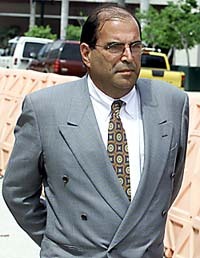
Nobody would have ever found out. But Pappalardo tipped me off, by giving me a cock and bull story about Codelco corporation but had he not said anything to me and just sent them over under a diplomatic note I would have never known about it and the Consul would have given them visas as he gives every day to five or ten people who are on official travel on official Paraguayan passports.... Of course, the government certifies this.
But I must say that if it were not for the fact that as a safeguard, I photographed the two people, Townley and Fernandez Larios, who came to Paraguay, the case could never have been broken. At least we had the photos. It shows that it pays off to be extra careful sometimes and still take the chance of doing it....

Nobody would have ever found out. But Pappalardo tipped me off, by giving me a cock and bull story about Codelco corporation but had he not said anything to me and just sent them over under a diplomatic note I would have never known about it and the Consul would have given them visas as he gives every day to five or ten people who are on official travel on official Paraguayan passports.... Of course, the government certifies this.
But he (Pappalardo), whether it was just because of a loose tongue or whether he really wanted to tip us off, you never know.
source:http://www.huffingtonpost.com
Beyoncé Shares AdorableSuper Bowl Photos With Blue Ivy
- 0
Hours after stunting all over the Super Bowl 50 Halftime turf, queen Beyoncé shared adorable behind-the-scenes photos from the excellent — and powerful — production. See photos after the cut
Shot on the field most likely before kick-off, the intimate black-and-white images show Bey in full costume, mic in hand, in an empty Levi’s Stadium, with Jay Z and their 4-year-old daughter, Blue Ivy, hanging out on home turf. We wonder if Blue is used to having a goddess for a mother or if every performance is a novelty to her. Either way, Blue is clearly her mom’s #1 fan. (Sorry, Beyoncé stans.)
The 34-year-old superstar shared the candid snaps from dress rehearsals on Instagram, where she also posted photos of her fierce back-up dancers getting ready to perform “Formation,” the single she released Saturday, on the field. In another photo, Blue is seen standing, completely mesmerized by her mom, as Bey is strutting on the pitch.
After the epic Halftime performance, Beyoncé told ET Online that she just “wanted people to feel proud and have love for themselves.” Undoubtedly, there was no one prouder in that stadium Sunday night than Blue Ivy.
source: mtv.com
'Jason Bourne,' 'Captain America' and More Super Bowl Trailers (VIDEO)
Matt Damon is back as "Jason Bourne" and Robert Downey Jr. has some choice words for a rogue Captain America in exclusive Super Bowl spots. Also "Batman v Superman" joined forces with an airline to create an amazing, fake commercial that didn't play during the game but was posted online last night nonetheless. See trailers after the cut
"Jason Bourne"
In this teaser, we see Bourne doing what he does best, kicking butt. Tommy Lee Jones' character wants to know why Bourne is back now, almost a decade after the events of "Ultimatum," the third movie in Damon's run as Bourne.
"I know who I am, I remember everything," Bourne says.
"Captain America: Civil War"
This was a good one! We start off by seeing Cap finding the Winter Soldier, aka his best bud Bucky Barnes, in a strange situation. We also got a good look at some of Tony Stark's newest toys before Bucky and Cap faced off against Iron Man. A lot was packed in 30 seconds.
"You chose the wrong side," Iron Man says to Cap.
"Batman v Superman: Dawn of Justice"
This was different. It didn't air during the big game, but was still launched last night.
Turkish Airlines made fake commercials about flights to Gotham and Metropolis. Ben Affleck as Bruce Wayne, and Jesse Eisenberg as Lex in a commercial, what more could you want?
"Independence Day: Resurgence"
"X-Men: Apocalypse"
Subscribe to:
Comments (Atom)






